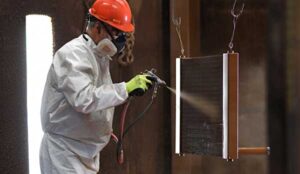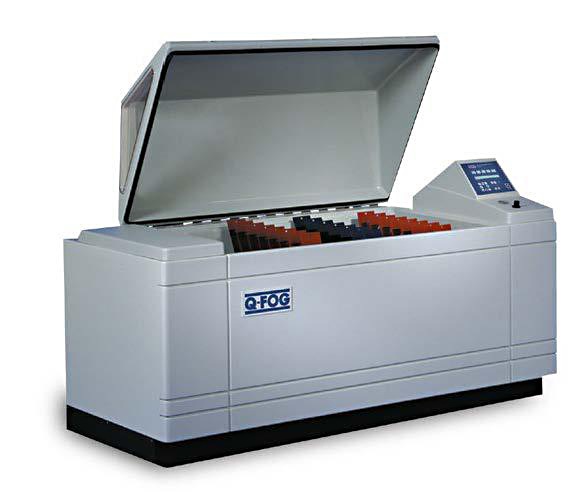

Tests measure all kinds of things, like physical endurance, intellectual prowess, and even emotional competence. And while all those are important, at Heresite Protective Coatings, our favorite test is salt spray testing.
Salt spray testing (also called salt fog testing) examines the corrosion resistance of our coatings and is used as an accelerated means for surfaces to withstand atmospheric corrosion. It’s done in a closed cabinet that can be changed to mimic different corrosive environments.
Heresite is fortunate to have a cabinet with a digital readout displaying the total hours of test cabinet operation and alarms that tell us things like if the salt solution level becomes low. Some salt spray tests run pretty long. Our Heresite P-413 was tested for 6,000+ hours… that’s a little over 8 months of continuous salt spray!
We use salt spray testing in two ways to develop and evaluate our HVAC-R and radiator coatings. For the first one, salt spray testing is used as a stand-alone corrosion resistance test.
The second test is called ISO 12944-9, an international standard on corrosion protection of steel structures, consisting of nine steps. In a nutshell, ISO 12944-9 is a cyclic test, where the panels are tested for 72 hours of UV exposure, followed by 72 hours of salt spray, then 24 hours of freezing. That cycle is repeated for 25 weeks or 4,200 hours.
Both the salt spray test and ISO 12944-9 are used to measure corrosion protection. However, there are some significant differences between the two. While neither test is an actual outdoor environment, ISO 12944-9 is much more like the extreme weather cycles that HVAC-R units are often exposed to in the real world.
The Society for Protective Coatings said, “combined corrosion/weathering is a substantial improvement to the traditional salt spray test in terms of reproducing atmospheric corrosion in an accelerated fashion.” You can learn more about the differences between these two tests by reading this study.
Once the required amount of exposure is reached for either testing, the lab evaluates the panels for the degree of blistering, rusting, and scratch creepage from the scribe. Our technical data sheets record and share the test hours and results. You can find links to each Heresite technical data sheet on the web page for that coating.
or call us at 920-684-6646